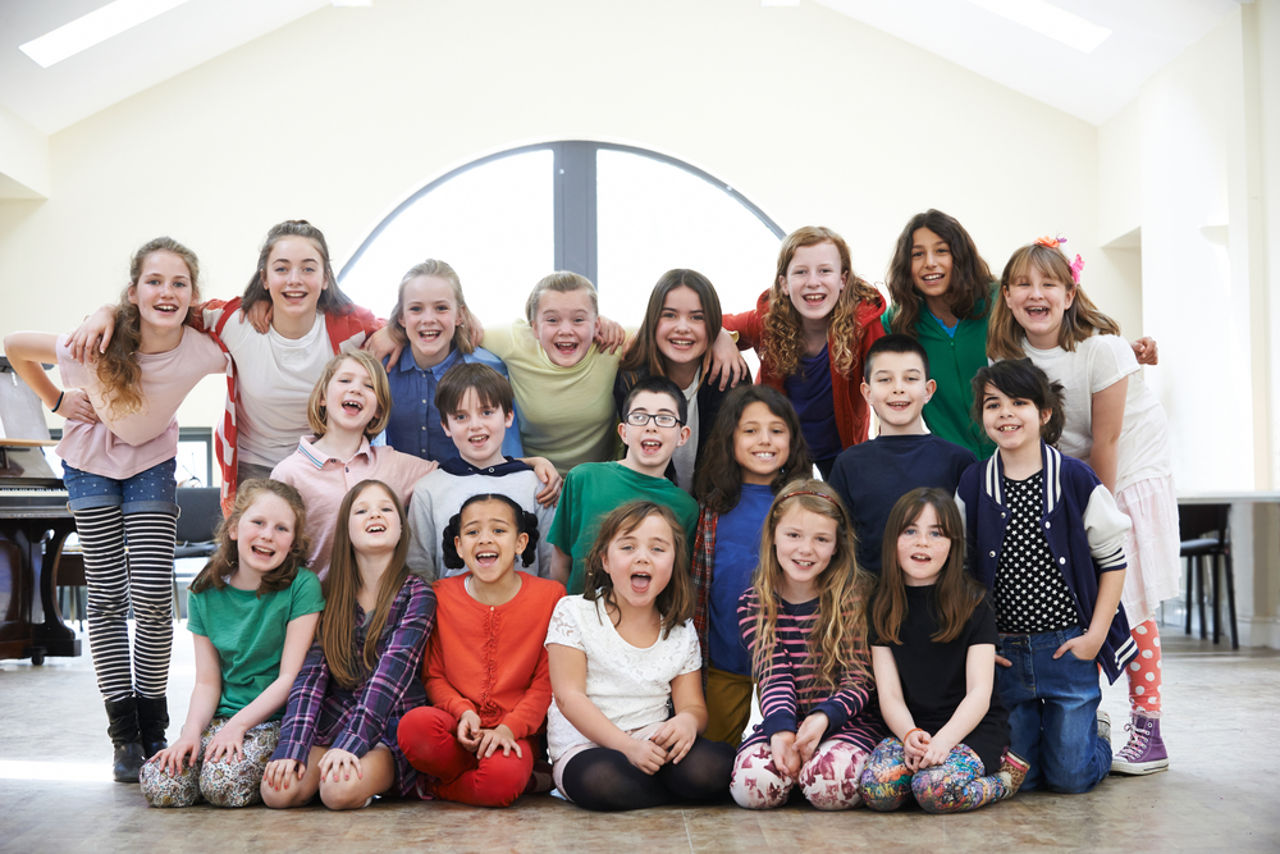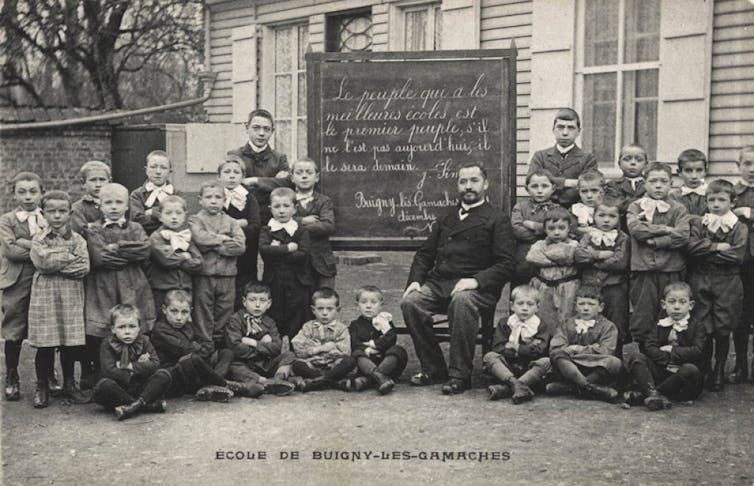The class photo, another school history?
As old as the invention of photography, since the middle of the 19th century the class photo has become a ritual that, in the digital age, remains a must-have from kindergarten to the end of high school. Witness to its time, the class photo reflects, sometimes in spite of itself, the political, cultural and social history of the school.
Sylvain Wagnon, University of Montpellier

It's "a memory you'll cherish", says the teacher to her pupils in the first chapter of Le Petit Nicolas. Petit Nicolaspresenting the class photo as the future image of a lost world, that of childhood. A sign, among others, in literature and cinema, that these clichés are indeed part of our history and imagination.
The first class photos were taken in the middle of the 19th century, in the most reputable secondary schools, which exhibited them. With the democratization of photographic technology in the last quarter of the 19th century, these "souvenir" images were offered to families. The money collected by school cooperatives was used to buy supplies or take part in school outings.
Between public and private
Director of the Musée national de l'éducation (MUNAÉ), Delphine Campagnolle, points out that "it's a highly symbolic object, halfway between the school and the private sphere, as these images are very often kept, or even passed on within a family". This nostalgic approach can also be found on sites where people hope to find a long-lost classmate through their class photos. Such is the case with Copains d'avantwhich boasts over 15 million members.
From the end of the 19th century, photographers such as Pierre Petit (1831-1909) specialized in portraits and school pictures. School photography companies were created, such as David et Vallois from 1867 and Tourte et Petitin from 1882.
The democratization and proliferation of class photos forced schools to regulate the way in which they could be taken, as early as 1927. The latest French circular on school photography dates from 2003. It sets out to prevent excesses by drawing up a "code of conduct" for class photos, respecting the rights of all those involved in the photo, whether the photographer, the school, or minors, with the necessary parental authorization.
The master at the center
In 2017, the fine exhibition at the Musée National de l'Education showed that the class photo is not just a cultural witness, but also a tool for understanding the history of the educational institution. For example, it contradicts the legend that the use of uniforms never existed in 19th-century public schools; it was a phenomenon specific to religious establishments.
With the introduction of Jules Ferry's free, compulsory and secular school system in 1881-1882, the class photo became the necessary reflection of a "school order" and a school form, with its values of rigor, seriousness and obedience. The photo of the class at Buigny les Gamaches school in 1906 is an enlightening example of the staging intended by the school establishment.

It shows a teacher at the center of his classroom, and a blackboard on which is written the quotation from the minister Jules Simon: "the people who have the best schools are the first people, and if they are not today, they will be tomorrow", an explicit quotation of this desire for revenge after the defeat of the Franco-Prussian war of 1870-1871.
More natural
In the mid-twentieth century, thanks to technical advances in rapid pause times and the will of the institution, photography evolved towards a more "natural" look. Faces are more smiling, whether of students or teachers. But does the class photo illustrate the transformation or immobility of the "school world"?
For this vision of the class photo changed little until the mid-1960s. Is this proof of a society where the status quo prevails? Or does the unchanging ritual reflect the permanence of this republican school? But since the 1970s, a "softening of the norm" has been perceptible in the positioning of pupils, their dress, the place of the teacher in the photo, and also co-education, a late but powerful sign of the school's evolution.
A nostalgic symbol of childhood, the class photo is slowly evolving. Is it not the sign of a school institution that, while fundamentally modernizing, remains true to the same school form?![]()
Sylvain Wagnon, Professor of Education, Faculty of Education, University of Montpellier
This article is republished from The Conversation under a Creative Commons license. Read theoriginal article.